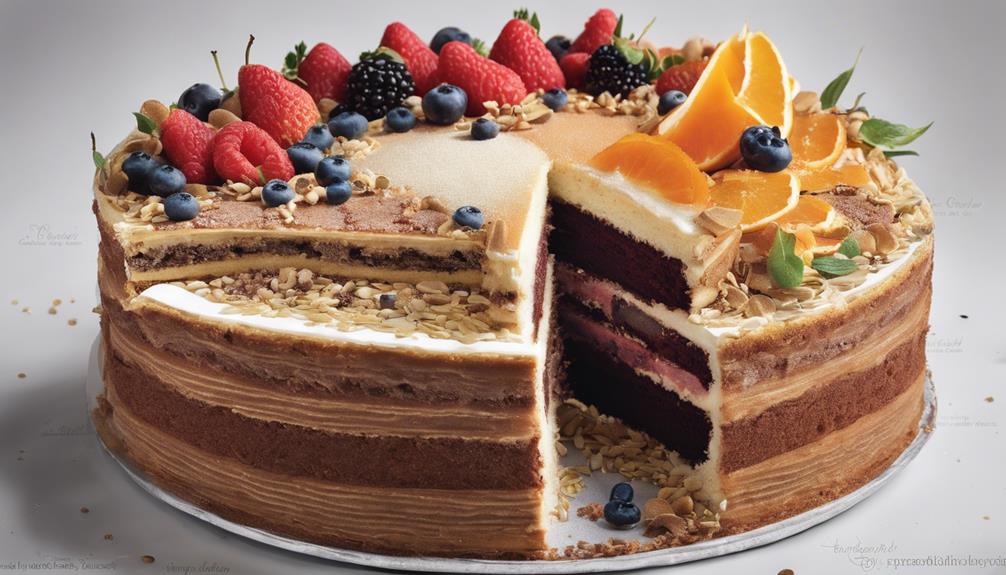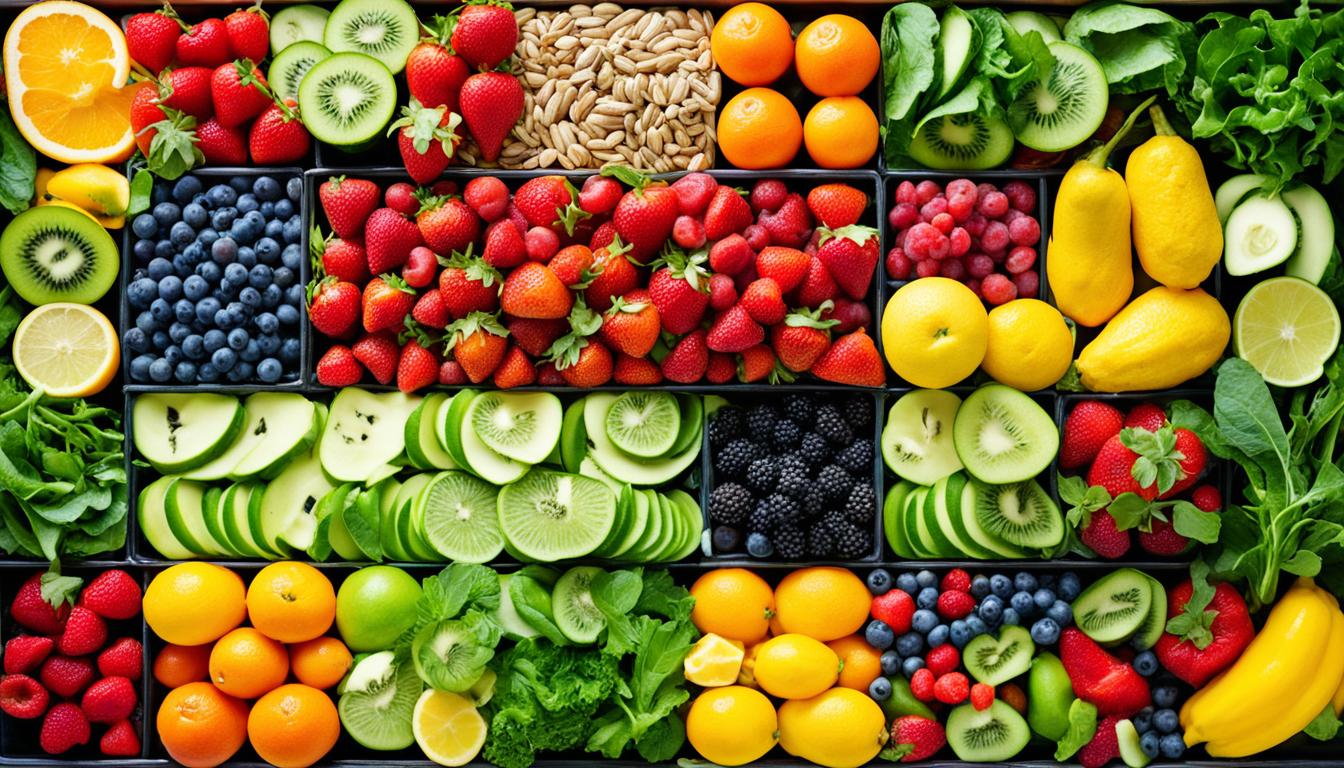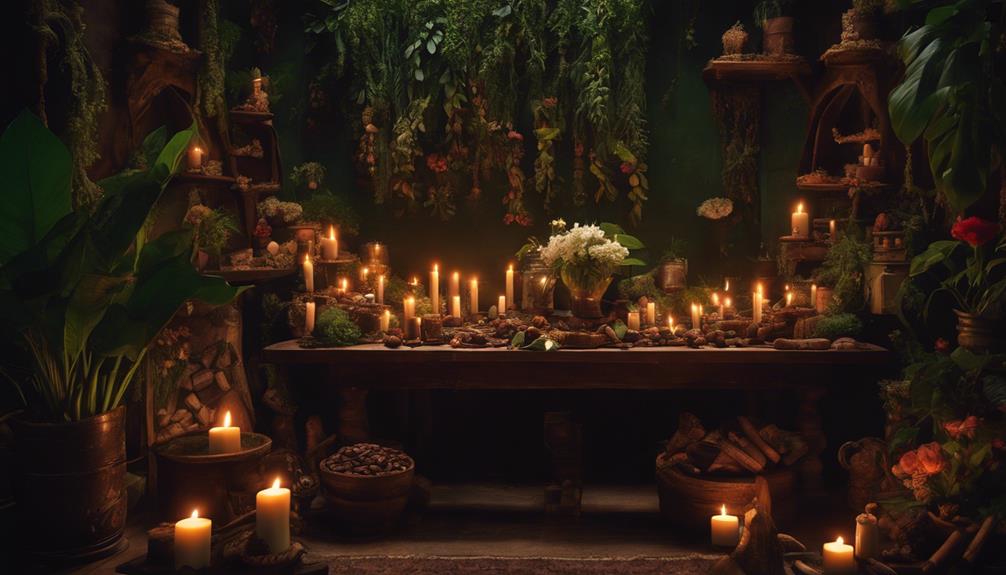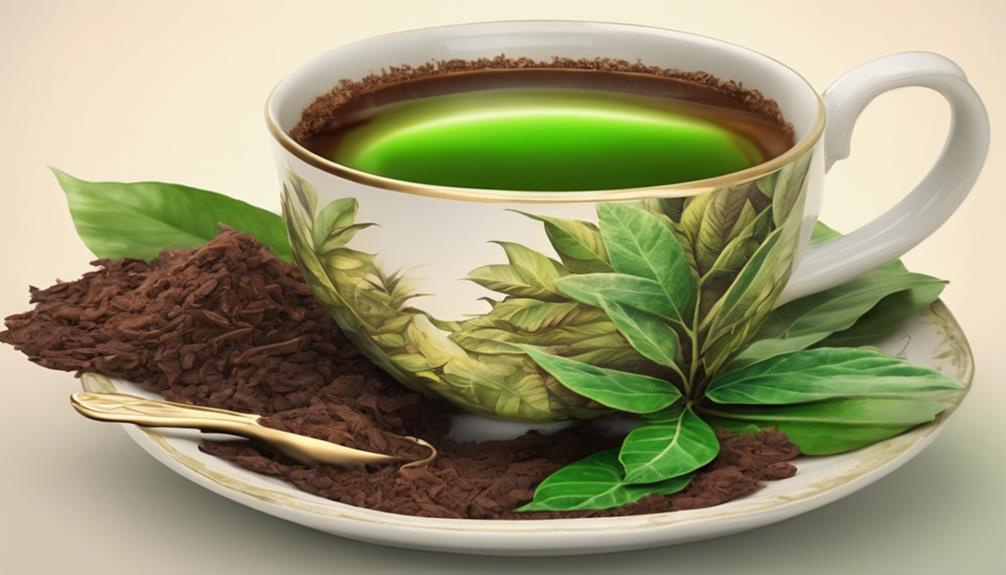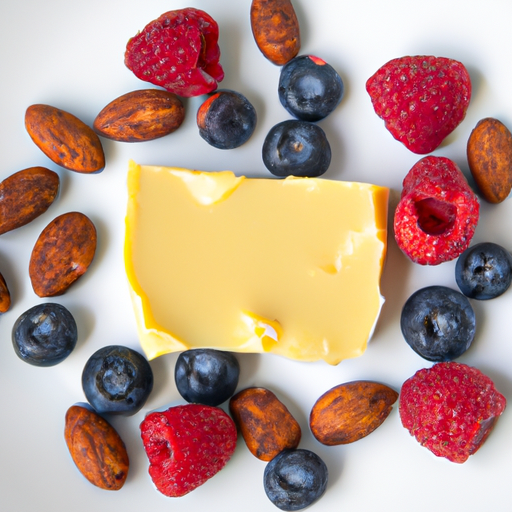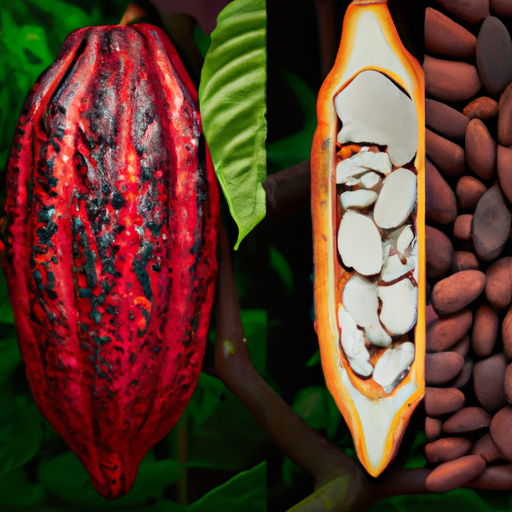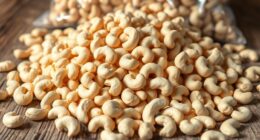Understanding the importance of cake filling is crucial when aiming to create delicious desserts; it elevates the flavor, moistness, and texture. When choosing a filling, consider the type of cake you are working with – for example, pair sponge cake with whipped cream or chocolate cake with a rich cream filling. There is a wide range of options to choose from, including traditional buttercream to more adventurous choices like salted caramel or Nutella, allowing for endless possibilities. Factors such as flavor harmony, storage methods, and consistency are key in selecting the perfect filling.
Introducing frostings as fillings can bring depth, moisture, and unique flavors to your cakes. To elevate your cakes further, experiment with creamy, crispy, or presentation-improving fillings like custard, nuts, or fresh fruits. Mastering cake filling techniques guarantees delicious outcomes and unlocks a world of creative possibilities for your baking pursuits.
Key Takeaways
- Cake fillings enhance flavor, moisture, and texture.
- Pair filling with cake type for optimal taste.
- Consider traditional or adventurous flavors.
- Ensure compatibility, storage, and consistency.
- Experiment with different fillings for unique combinations.
Importance of Cake Fillings
Cake fillings play an important role in enhancing the flavor, moisture, and texture of a cake. When selecting a filling, consider the type of cake you're working with. For instance, a light and airy sponge cake may pair well with a fluffy whipped cream filling, adding a delicate touch to each bite. On the other hand, a dense chocolate cake could benefit from a rich and decadent cream filling, elevating its indulgent taste.
Fruit fillings are another popular choice, bringing a burst of freshness and natural sweetness to the cake. Whether it's a zesty lemon curd or a vibrant berry compote, fruit fillings can add a delightful contrast to the cake's richness. Additionally, cream fillings like custards or pastry creams can provide a luscious and creamy texture that complements the cake layers perfectly.
Experimenting with different cake filling recipes is a fun way to discover new flavor combinations and enhance your baking skills. By understanding the role of fillings, you can create cakes that not only look impressive but also taste utterly delicious.
Variety of Cake Filling Options
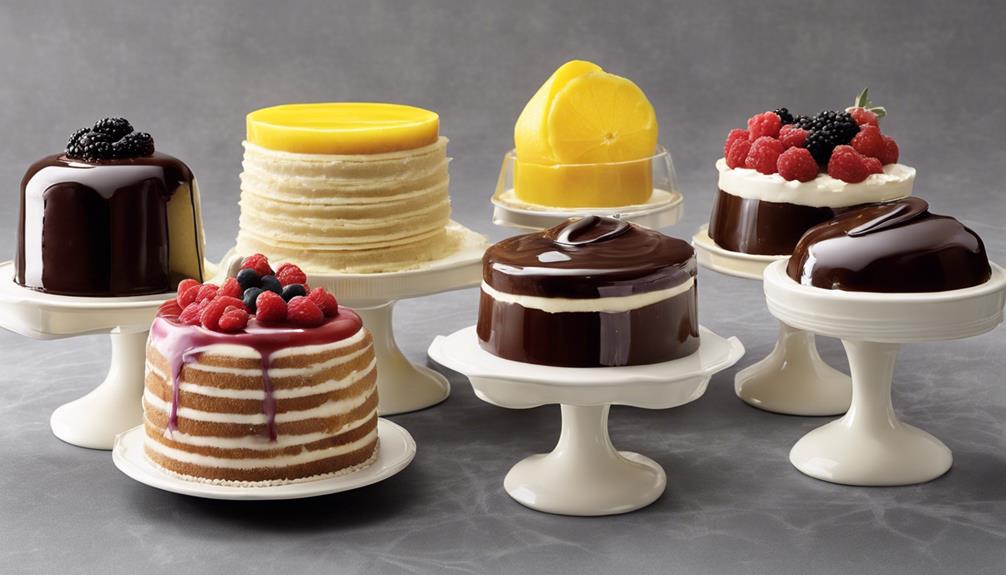
Cake fillings offer a plethora of options to elevate your cake to new heights. From traditional flavors like buttercream and cream cheese to more adventurous choices like salted caramel and Nutella, the possibilities are endless.
Whether you prefer fruity, creamy, or decadent fillings, there's a perfect combination waiting to enhance your cake.
Popular Filling Flavors
Frequently selected by bakers and dessert enthusiasts, popular filling flavors for cakes encompass a diverse array of options. Here are some delectable choices to ponder:
| Filling Flavor | Description |
|---|---|
| Cream Cheese Frosting | Rich and tangy, perfect for carrot or red velvet cakes. |
| Chocolate Fudge | Indulgent and decadent, ideal for chocolate lovers. |
| Citrusy Curd | Bright and zesty, adds a rejuvenating twist to vanilla or almond cakes. |
| Mousse | Light and airy, comes in various flavors like chocolate, raspberry, or pistachio. |
These flavors offer a delightful range from creamy to fruity and are sure to elevate any cake to a new level of deliciousness.
Creative Filling Combinations
When exploring creative filling combinations for cakes, mixing buttercream with various flavors provides a stable and versatile option for multi-layered creations.
Lemon curd adds a citrusy freshness that can be enhanced with lavender or fresh berries, offering a vibrant twist.
Chocolate ganache brings a rich, decadent element that complements vanilla, red velvet, and hazelnut cakes beautifully.
Coconut cream filling introduces a tropical delight with its creamy texture, pairing harmoniously with pineapple, mango, or passion fruit cakes for a taste of the islands.
For coffee enthusiasts, espresso buttercream is a fantastic choice, infusing a rich coffee flavor that marries well with chocolate, vanilla, and caramel cakes.
These diverse filling combinations, including tropical fruits, offer a spectrum of flavors to elevate your cake creations.
Factors Influencing Cake Filling Choice
Considering the compatibility of cake flavors is important when selecting the ideal filling to enhance the overall taste. The storage conditions of both the cake and filling play a significant role in maintaining freshness and stability.
The texture and consistency of the filling should align with the desired cake structure and presentation, ensuring a harmonious blend of flavors and textures. Additionally, the heat resistance of the filling is essential for baking inside cakes without compromising their integrity.
The amount of filling needed can vary based on the type of filling, the number of cake layers, and personal preferences for flavor balance. By carefully considering these factors, you can create a cake with a filling that not only complements the cake's flavor but also enhances its overall appeal.
Incorporating Frostings as Fillings
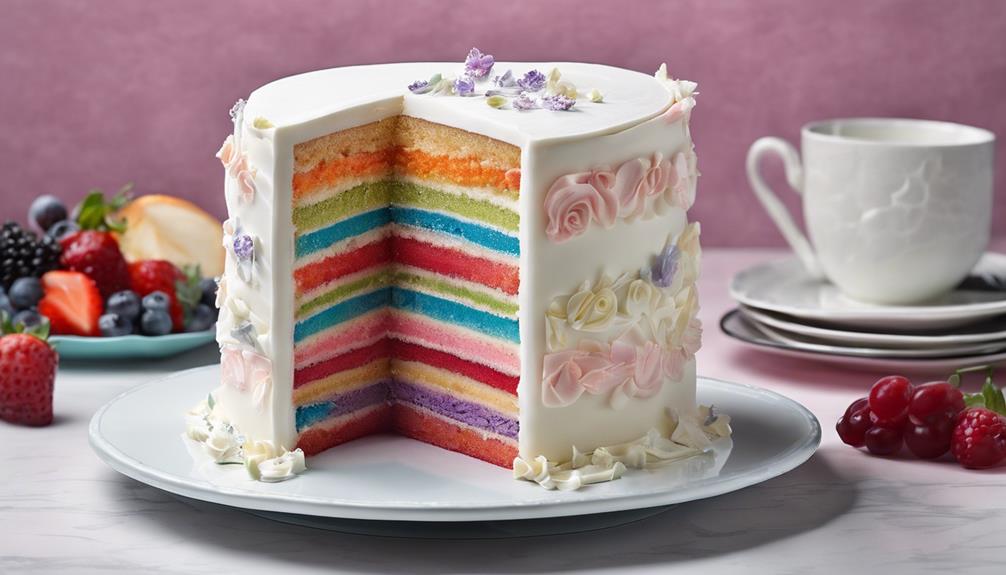
To seamlessly elevate the flavor profile of a cake, incorporating frostings as fillings offers a delectable and versatile option. When using frostings as fillings, consider the following:
- Versatile Options: Frostings like chocolate buttercream or cream cheese can be used as delicious fillings that add flavor and moisture to your cake layers.
- Customizable Flavors: Experiment with different flavored fillings to create unique combinations that suit your taste preferences and complement your cake recipe.
- Maintain a Consistent Flavor Profile: Using the same frosting as both a filling and outer layer simplifies the baking process and maintains a cohesive flavor profile throughout the cake.
- Long-lasting Freshness: Cakes with buttercream or cream cheese fillings can stay fresh for several days when properly stored, allowing you to enjoy your creation over time.
Incorporating a fluffy buttercream filling or a tangy cream cheese filling between your cake layers can take your layer cake to the next level, adding depth and richness to each bite.
Tips for Layering Cake With Fillings
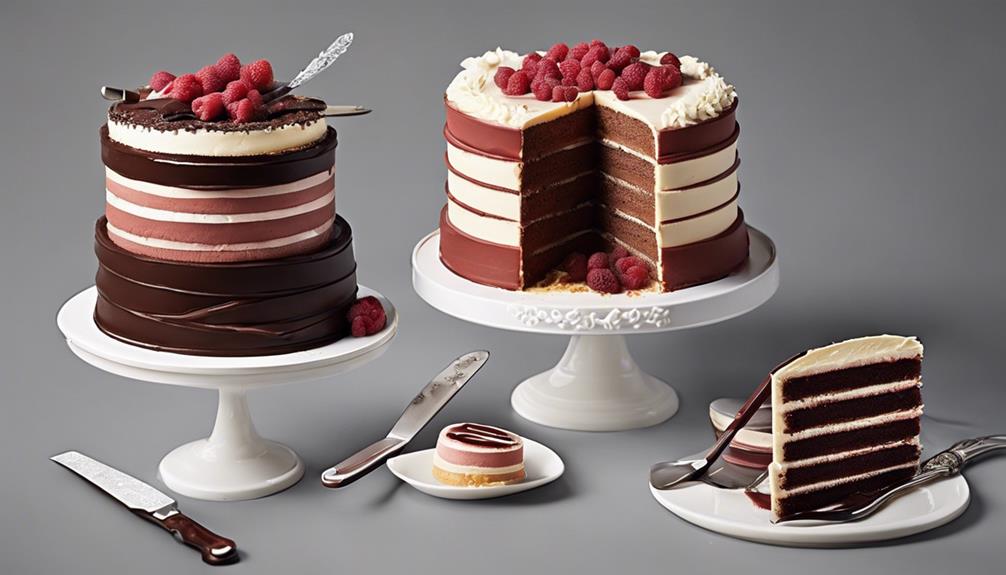
For layering a cake with fillings, make sure the fillings are evenly spread between each layer. Using a piping bag or offset spatula can help achieve a smooth and consistent layer of filling. Chilling the cake layers with the filling in between can help set the layers and prevent sliding or shifting. Crumb-coating the cake before adding the final layer of frosting can help seal in the filling and create a smooth finish. Adding a thin layer of frosting on top of the filling before adding the next cake layer can help create a stable and even structure for the cake.
| Cake Layer | Fillings | Layer |
|---|---|---|
| Vanilla | Butter | Egg yolks |
| Custard filling | Chocolate chip |
Layering a cake is an art that requires precision and care. By following these tips, you can make sure that each layer is perfectly balanced with delicious fillings, creating a cake that not only looks stunning but tastes amazing too.
Enhancing Cakes With Different Fillings
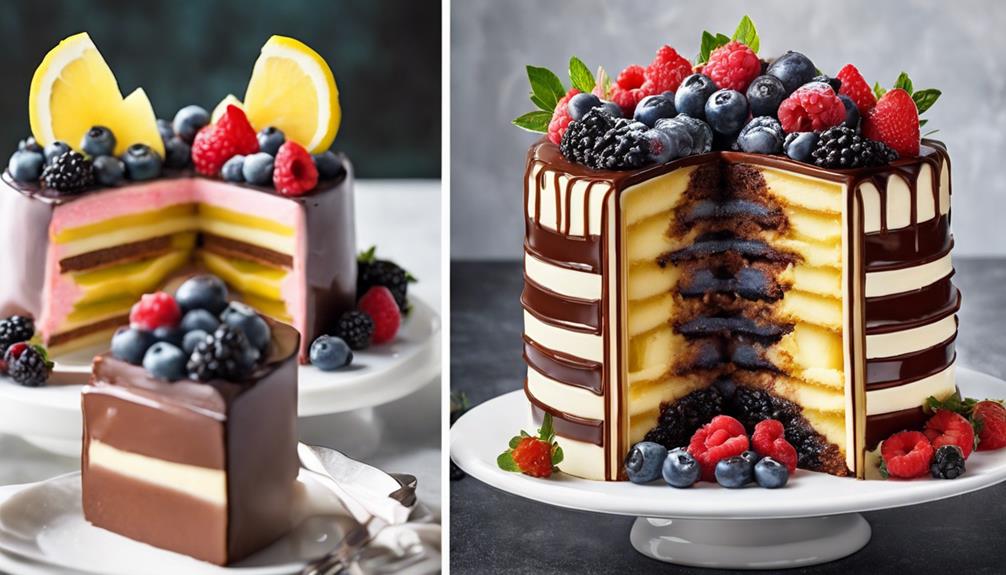
When enhancing cakes with different fillings, it's crucial to explore flavorful options like:
- Buttercream
- Cream cheese
- Lemon curd
These fillings not only add taste but also provide a contrast in texture, creating a more exciting eating experience.
Additionally, selecting fillings that enhance the presentation of the cake, such as:
- Chocolate ganache
- Fruit preserves
can make your creation visually appealing and delicious to eat.
Flavorful Filling Options
Delving into the world of cake filling options, one encounters a multitude of flavorful choices that can elevate any cake to new heights of deliciousness. Here are some delicious options to contemplate:
- Buttercream filling: A classic choice with a rich, creamy texture and sweet taste, perfect for piping intricate designs on cakes.
- Lemon curd filling: Offers citrusy freshness with a tangy flavor and smooth texture, adding a burst of brightness to any cake.
- Chocolate ganache filling: An ultimate indulgence for chocolate lovers, with a rich, decadent flavor and silky smooth texture that pairs perfectly with chocolate cakes.
- Whipped cream filling: Light and airy with delicate sweetness, ideal for complementing chocolate, vanilla, and fruit-flavored cakes.
These flavorful fillings can transform a simple cake into a culinary delight.
Textural Contrast Importance
Exploring the significance of textural contrast in cake fillings enhances the overall enjoyment of each bite. Mixing a creamy filling with a crunchy element can create a delightful experience for your taste buds. The contrast between a moist cake and a crunchy or creamy filling adds depth to the sensory pleasure of eating cake. This balance of textures keeps the palate engaged and complements the sweetness of the cake. Experimenting with different fillings, such as fruity preserves or light whipped cream, can elevate the overall experience of enjoying a slice of cake. By incorporating various textures, like creamy custard or a crunchy topping, you can enhance the sensory delight that comes with every mouthful.
| Creamy | Crunchy |
|---|---|
| Custard | Nuts |
| Whipped cream | Toffee |
| Ganache | Cookies |
| Mousse | Meringue |
Presentation Enhancing Fillings
As we explore methods to elevate cakes with various fillings, it's important to consider how presentation enhancing fillings can boost both the visual appeal and flavor complexity of a cake.
- Incorporating layers of Peanut Butter or Dulce de Leche can create a rich and indulgent taste profile.
- Fresh fruit fillings add a burst of freshness and a pop of color to the cake.
- Adding chocolate to the filling can bring a decadent and luxurious element to the overall flavor.
- Dusting the top with powdered sugar can give the cake a touch of elegance and a hint of sweetness.
Frequently Asked Questions
What Consideration in Choosing Cake Filling?
When I select cake filling, I confirm flavor compatibility, storage conditions, and heat resistance. I verify the filling can hold up if made ahead. The amount depends on the type of filling, cake, layers, and my taste.
What Are the Steps in Filling Cake Layers?
To fill cake layers, I level them first. Then, I spread frosting on the bottom layer, add the filling evenly, and gently place the next layer. I repeat if multi-layered, chill, and finally frost the exterior.
What Is the Filling in a Cake Called?
The filling in a cake is called cake filling. It's a delectable layer of cream, fruit, or other ingredients nestled between cake layers, adding moisture and flavor. Selecting the right filling is key for a delicious cake.
What Is the Difference Between a Frosting and a Filling?
When I make cakes, frosting is the thick layer on the outside for decoration. Filling, a thinner layer inside, adds flavor and moisture. Frosting is for the surface; filling enhances layers. Each plays a unique role in taste and texture.
How Can Cake Filling Enhance the Taste of Raw Shrimp?
Adding a cake filling to your raw shrimp tasting experience can enhance the overall flavor profile. The creamy texture and sweet notes of the filling complement the natural umami of the shrimp, creating a harmonious and satisfying combination. Try experimenting with different fillings to elevate your raw shrimp tasting experience to new heights.
Conclusion
To sum up, grasping cake fillings is crucial for crafting delectable and visually appealing cakes. With a variety of filling options at your disposal, it's vital to ponder factors like taste, texture, and compatibility with the cake.
Infusing frostings as fillings can introduce additional flavor and moisture to your cake. When layering cakes with fillings, keep in mind to evenly distribute them for a harmonious taste in every bite.
Experimenting with various fillings can elevate the overall experience of savoring a slice of cake.

